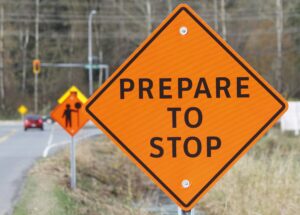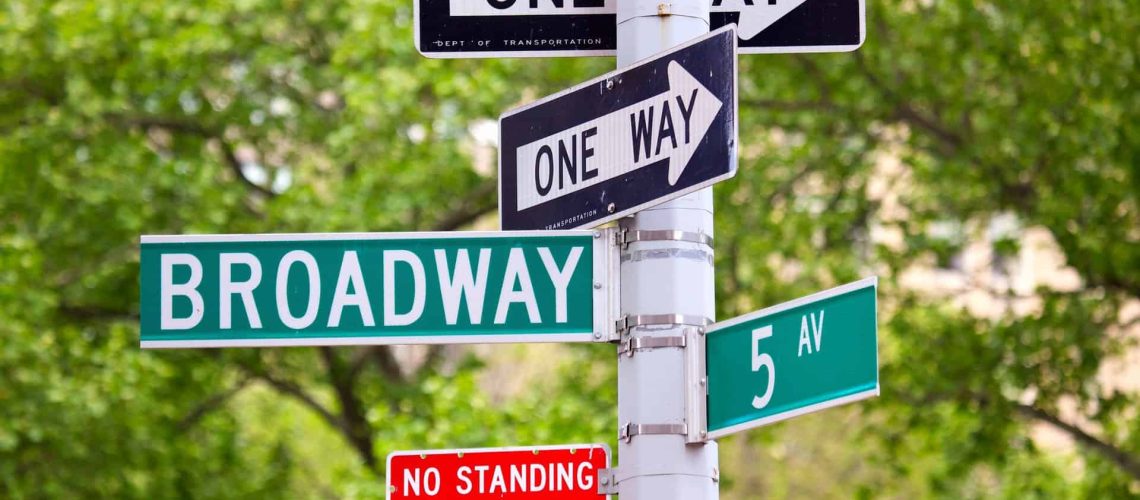Road Signs in Stockton are a fascinating phenomenon that we view sometimes hundreds of times a day. They are engineered specifically to be highly visible and easily understood, but we brush by them without ever really giving them a second look. It’s easy to ignore them because of the incredible standardization. Road signs are regulated down to the very form of adhesion used to attach the reflective surfaces making it difficult to vary much in appearance. Here we’ll go into a little more detail on just what makes road Signs in Stockton look so similar.
So Why Do The Road Signs In Stockton Look Like That?
The Short answer is because of the rules and regulations set forth by California’s CalTrans. CalTrans has rules regarding absolutely everything to do with roadways. The rules vary depending on the classification of the roadway the signs are serving, as well as the classification of sign itself. Constriction and caution signs have an entirely different set of rules from your regular everyday traffic sign. And depending on the sign classification be it road sign, stop sign, so on and so forth, the location for mounting those signs are completely different.
How Are They All So Similar Then?
Reflectors
Well, for starters, Every single sign regardless of classification if it is being used as a road sign is required to use highly optical reflective coatings. These materials are limited to a short list of CalTrans Approved products and materials. For example road signs are limited to using reflectors of the classes 3,4,8,9, and 11 with an adhesive backing of class 1,3,or 4 and reflector class 2 with class 1,2,3, or 4 adhesive backing.
Materials

All road signs are restricted to being produced from aluminum sheeting and some aluminum alloys that have been pre treated for corrosion. No other form of sign is allowed to be used. Furthermore the gauge of aluminum sheeting is restricted based on application. All panels are required to withstand at least 33 lbs/ square foot to ensure they are safe to use in high winds. The list goes on and on. Suffice it to say that the metal backing is heavily standardized. Without all these rules and regulations we’d never know where to look, or even if the signs were missing! Blown away by last week’s wind storm.
Manufacturers
Third, all road signs are only allowed to be built by certain certified companies like Stockton’s own Capitol Traffic Services. No other company or individual without the proper licensing can manufacture the road signs. They keep track of this by requiring all signs manufactured be imprinted with the phrase “Property of the state of California”. The name of the company that manufactured it. The month and year it was manufactured. The type of reflective sheeting used. Even the manufacturer and lot numbers for the reflective sheeting.
All this information is required to be imprinted in the lower right hand corner of the sign. It cannot be placed in any location where it may be covered by mounts to the sign. Going even further, one sign from each lot of signs produced by the manufacturer must be submitted to the state for testing. Anything found to be out of compliance on that sign renders the whole lot unfit for use on California’s roads.
In Conclusion
Road signs in stockton play a huge role in our daily lives. It makes sense that they would be so heavily regulated. These signs are sometimes the only thing keeping us safe on our daily commute. Whether it’s to and from work, school, or anywhere else. It’s nice to know that someone’s taken the precautions. Caltrans makes sure that not only are the signs visible and easily understood. But gone so far as to make sure their locations are standard, and that they will last for years to come. Can you imagine what it would be like without these rules? It would be difficult to know where we were going, let alone how we should get there. Road Signs save countless lives and we should strive to give them some of the credit they deserve!






